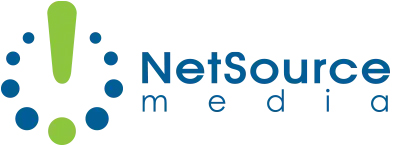As a kid, I loved looking up phone numbers in the Yellow Pages for my parents. A business had to have a listing in the local phone book back then to get found by consumers like us.
Today, I can’t remember the last time I pulled out an actual phone book to search for a local business. Can you?
As phone books were phased out, the Yellow Pages and many more companies created online local listing websites, and mapping apps to keep up with the mobile, smart phone consumers.
So before, when I had maybe 2-3 different phone books, the information was easy enough to keep updated and consistent. Now there’s a ton of local listing websites, and mapping apps out there with no single source for all of this data, which makes it really easy for your business information to get entered incorrectly, have multiple listings, etc.
What are local listings?
Google+ Local, Yelp, Bing Places, Yellow Pages, and Yahoo! Local are some of the local listing websites you might recognize. Hopefully, each of the local listing websites has a “profile” in their system for your business. The information you can display in your profile varies somewhat from site to site, but typically it contains business name, address, and phone number.
43% of US business listings had an incorrect or missing address
The owner of the business, once verified, can “claim” the listing, update the information they have online if needed, and add details about your business that they are missing. The verification process is different from site to site, so you’ll need to follow the instructions on each one to ensure you complete their process to claim the business listing as your own.
Why do you need local listings?
The purpose of creating local listings is to make your business visible on the internet with accurate and consistent information, and to increase your ranking in local searches.
According to Moz, the #1 negative local ranking factor is a “listing detected at false business location”.
Mismatched NAP (name, address, and phone number) is the 3rd biggest negative ranking factor. It’s pretty clear that inaccurate local listing data will kill your local SEO, which is fairly vital to your business’ online success.
How do you setup and/or update your local listings?
It’s not easy, but I have a few options for you to consider:
- If you have nothing else to do for the next 3-6 months… Manually locate and update each local listing for your business. You can start this process by just typing in your company name, city and state into a search engine. Sift through the results that produces, go to each local listing website, and claim/verify/update your profile with them individually.
- If you have about 6-10 hours of uninterrupted time you can dedicate… Sign up with a reputable local listing service. Typically, you can enter / manage your company information in their system, and they will handle updating it to the local listing websites for you.
- Hire someone to take care of it for you. If a service is recommended to you from another business that is using it, search for their company name, city and state in a search engine to see how their local listings rank and look.
If going with #2 or #3, you’ll want to use a service that allows you to make the most use of your local listings, which should be much more than just name, address, and phone number… videos, photo galleries, payments accepted, hours of operation, social media links, website address, etc., AND helps you get rid of the duplicate local listings for your business.
Keep in mind, when you use a service to claim / verify / update your local listings, if you decide to cancel that service, you might need to start all over again with the local listings.
Click HERE to run a free scan of your local listings.
If you find that you need help updating and maintaining your local listings, my team can help. Download our Local Listings Plan PDF: Premium-Local-Listings.pdf.
Cindy Spencer 🙂
 Cindy Spencer, an Account Manager at NetSource Media since 2000, works with clients across the US with RVUSA.com, TrailersUSA.com and RVCanada.com. Cindy and her in-house team of designers and programmers helps dealers with responsive website design, website & email hosting, inventory management & distribution, website maintenance, SEO, and much more. Connect with Cindy on Google+.
Cindy Spencer, an Account Manager at NetSource Media since 2000, works with clients across the US with RVUSA.com, TrailersUSA.com and RVCanada.com. Cindy and her in-house team of designers and programmers helps dealers with responsive website design, website & email hosting, inventory management & distribution, website maintenance, SEO, and much more. Connect with Cindy on Google+.

